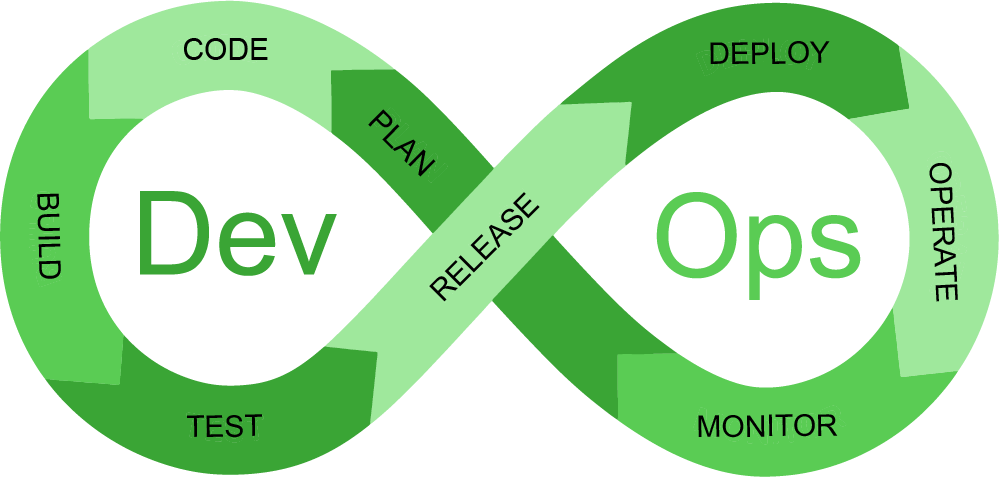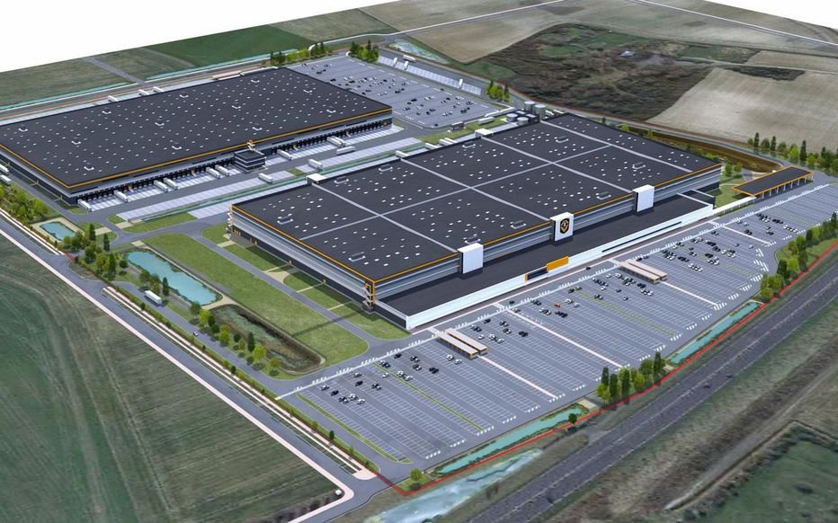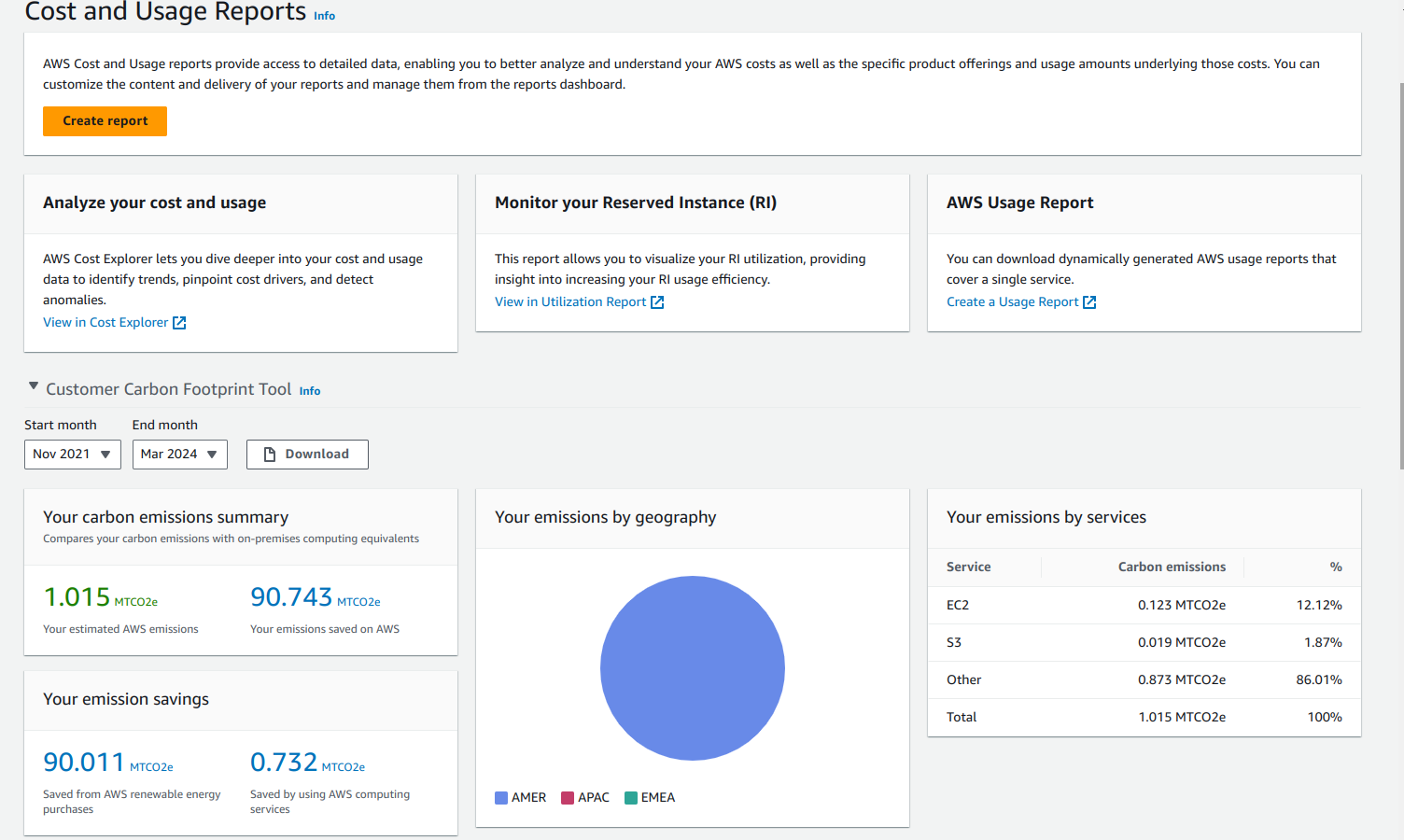Achieving Corporate Sustainability Goals with Green DevOps on AWS
Introduction
Do companies believe their infrastructure no longer emits CO2 by migrating to the cloud?

data in cloud
Many companies believe that moving their infrastructure (data) to the cloud automatically makes them environment-friendly, but this is a misconception. While running infrastructure on the cloud can be more efficient than traditional data centers, it still consumes significant energy and contributes to carbon emissions. The key to truly minimizing environmental impact lies in adopting Green DevOps practices, which focus on optimizing resource usage and implementing sustainable IT operations.
What is Carbon Footprint?
Carbon footprint refers to the total amount of greenhouse gases, mainly carbon dioxide (CO2), emitted directly or indirectly by human activities. In IT infrastructure, including data centers and cloud environments, carbon footprint is measured by the energy consumption required to power and cool servers, network equipment, and other hardware components.
The continuous demand for computing power and storage drives the IT industry’s carbon footprint. As businesses increasingly migrate to the cloud, understanding and reducing this carbon footprint becomes crucial for environmental sustainability.
What is Green DevOps?
Green DevOps is the integration of sustainable practices into the SDLC. It aims to reduce the carbon footprint of IT operations by optimizing resources, improving efficiency, and leveraging green technologies.

Green DevOps
Benefits of Green DevOps
- Improved Resource Efficiency: Optimizing resource utilization ensures that only necessary resources are used, minimizing waste and maximizing productivity.
- Enhanced Software Quality: Sustainable practices often lead to cleaner code and better architecture, resulting in more maintainable and reliable software.
- Cost Savings: Lower energy costs and reduced resource waste translate into significant financial savings for organizations.
- Regulatory Compliance: Adopting green practices can help companies meet environmental regulations and standards, reducing the risk of fines and penalties.
- Positive Brand Image: Organizations that prioritize sustainability enhance their reputation and attract environmentally conscious customers and talent.
- Innovation Opportunities: Focusing on sustainability can drive innovation, prompting teams to explore new technologies and methodologies that benefit both the environment and the organization’s goals.
- Reduced Energy Consumption: Implementing energy-efficient practices leads to lower power usage, which directly reduces operational costs and environmental impact.
AWS Commitment to Sustainability
AWS understands its role in protecting the environment. The company is committed to reaching net-zero carbon emissions by 2040—ten years ahead of the Paris Agreement. Here are some of its key initiatives:
- Renewable Energy Usage: AWS powers its data centers with renewable energy like wind and solar. A significant portion of its global infrastructure already runs on renewable energy, with plans to reach 100% soon.

AWS DataCentre
- Energy-Efficient Infrastructure: AWS continually works to make its services more energy-efficient. For example, the AWS Graviton processors and other efficient instance types help reduce energy use while still delivering high performance.
- Sustainability Pillar: Sustainability is one of the six key areas in the AWS Well-Architected Framework, highlighting AWS’s commitment to responsible resource management and environmental care.
Green DevOps Practices On AWS
Leveraging AWS services to effectively implement Green DevOps can significantly reduce your carbon footprint. Here are some key tools and strategies:
- Customer Carbon Footprint Tool: The Customer Carbon Footprint Tool provides estimates of the carbon emissions associated with your AWS usage. This tool helps you monitor and manage your environmental impact.
How to Use the Tool?
– Sign in to the AWS Management Console.
– On the navigation pane, choose Legacy Pages, then Cost and Usage Reports.
– Select your reporting period under the Customer Carbon Footprint Tool.
– This tool offers detailed insights into your carbon emissions, helping you make informed decisions to reduce your footprint.

carbon footprint calculator
- AWS Graviton Adoption: Graviton processors are designed for energy efficiency, offering high performance with lower power consumption. Migrating workloads to Graviton-based instances can significantly reduce your carbon footprint.AWS Graviton-based instances are also available in popular managed AWS services such as Amazon Aurora, Amazon ElastiCache, Amazon EMR, Amazon MemoryDB for Redis, Amazon OpenSearch, Amazon Relational Database Service (RDS), Amazon SageMaker, AWS Fargate, and AWS Lambda.

Green DevOps
Benefits:
– Energy Efficiency: More compute power per watt.
– Cost-Effective: Better price-performance ratio.
– Environmentally Friendly: Reduced energy consumption translates to lower emissions. - Serverless Architecture: Using AWS Lambda, API Gateway, Fargate, EMR Serverless, MSK Serverless, and other serverless services reduces the need for provisioning and managing servers. These services automatically scale based on demand, eliminating idle resources and optimizing energy use, which leads to efficient resource utilization and a reduced carbon footprint.
- Auto Scaling: Amazon EC2 Auto Scaling automatically adjusts the number of instances based on demand, ensuring efficient resource usage and minimizing waste.
- Caching Data: Utilize caching services like Amazon ElastiCache to store frequently accessed data, reducing the need for repeated data processing and decreasing resource consumption.
- Delete Unused Storage Resources: Regularly audit and delete unused resources such as old snapshots, unused S3 buckets, and EBS volumes to prevent unnecessary resource usage.
- Scale Down Infrastructure When Not in Use: Implement auto-scaling policies to scale down infrastructure during off-peak times, minimizing idle resources and reducing energy consumption.
- Right-Sizing Instances: Choosing the right instance types and sizes based on workload requirements to avoid over-provisioning.
- Storage Solutions: AWS offers storage solutions like S3 Glacier for data archiving, which consumes less energy compared to traditional storage options.
- Containerization: AWS ECS and EKS allow businesses to efficiently manage and scale containerized applications, optimizing resource allocation and reducing carbon emissions.
- Use of Spot Instances: Leveraging Amazon EC2 Spot Instances allows you to utilize unused capacity at up to 90% off, promoting efficient resource use and cost savings for flexible applications.
- Efficient Coding: Writing efficient, optimized code that requires fewer computational resources. Implementing algorithms that reduce processing time and energy consumption.
Case Study
In a recent project, we partnered with a leading company in the advertising sector to help them achieve their sustainability goals through Green DevOps practices on AWS. The project focused on optimizing their cloud infrastructure for both environmental impact and cost efficiency. Here’s how we implemented Green DevOps:
- Optimized Resource Usage: We implemented right-sizing for their EC2 instances and migrated to AWS Graviton-based instances, leading to reductions in energy consumption.
- Serverless Architecture: Key workloads were migrated to serverless services like AWS Lambda and Fargate, which reduced idle resources and enhanced energy efficiency.
- Auto Scaling and Spot Instances: By utilizing Amazon EC2 Auto Scaling and Spot Instances, we ensured that resources automatically adjusted based on demand basis, resulting in considerable savings on AWS Bill.
- Efficient Data Management: Data caching and archiving solutions using Amazon ElastiCache and S3 Glacier were introduced, which minimized the energy footprint associated with data storage and retrieval.
Results:
- Energy Savings: The implementation led to noticeable reductions in overall energy consumption.
- Cost Reduction: Operational costs were significantly lowered.
- Sustainability Impact: The client successfully met their carbon reduction targets, positioning themselves as an environmentally responsible leader in their industry.
This project demonstrated that by adopting Green DevOps practices, businesses can substantially reduce their carbon footprint while also benefiting from operational efficiencies and cost savings.
Conclusion
To conclude, reducing the carbon footprint in cloud computing is not just an obligation; it’s a valuable opportunity for businesses to make a positive impact on the environment. With AWS’s strong commitment to sustainability and its suite of innovative services, organizations are empowered to build and operate greener IT infrastructures. By embracing Green DevOps practices, leveraging AWS’s green services, and optimizing workloads, businesses can significantly lower their carbon emissions while enhancing operational efficiency and realizing cost savings.
We at TO THE NEW are dedicated to helping you adopt Green DevOps. Our expertise enables businesses to effectively implement sustainable practices and optimize their cloud operations. By partnering with TO THE NEW, you can seamlessly integrate green initiatives into your DevOps processes, ensuring a more efficient and environmentally responsible cloud journey.
Resources
For more information on AWS’s sustainability efforts and insights into reducing carbon footprints, explore:



